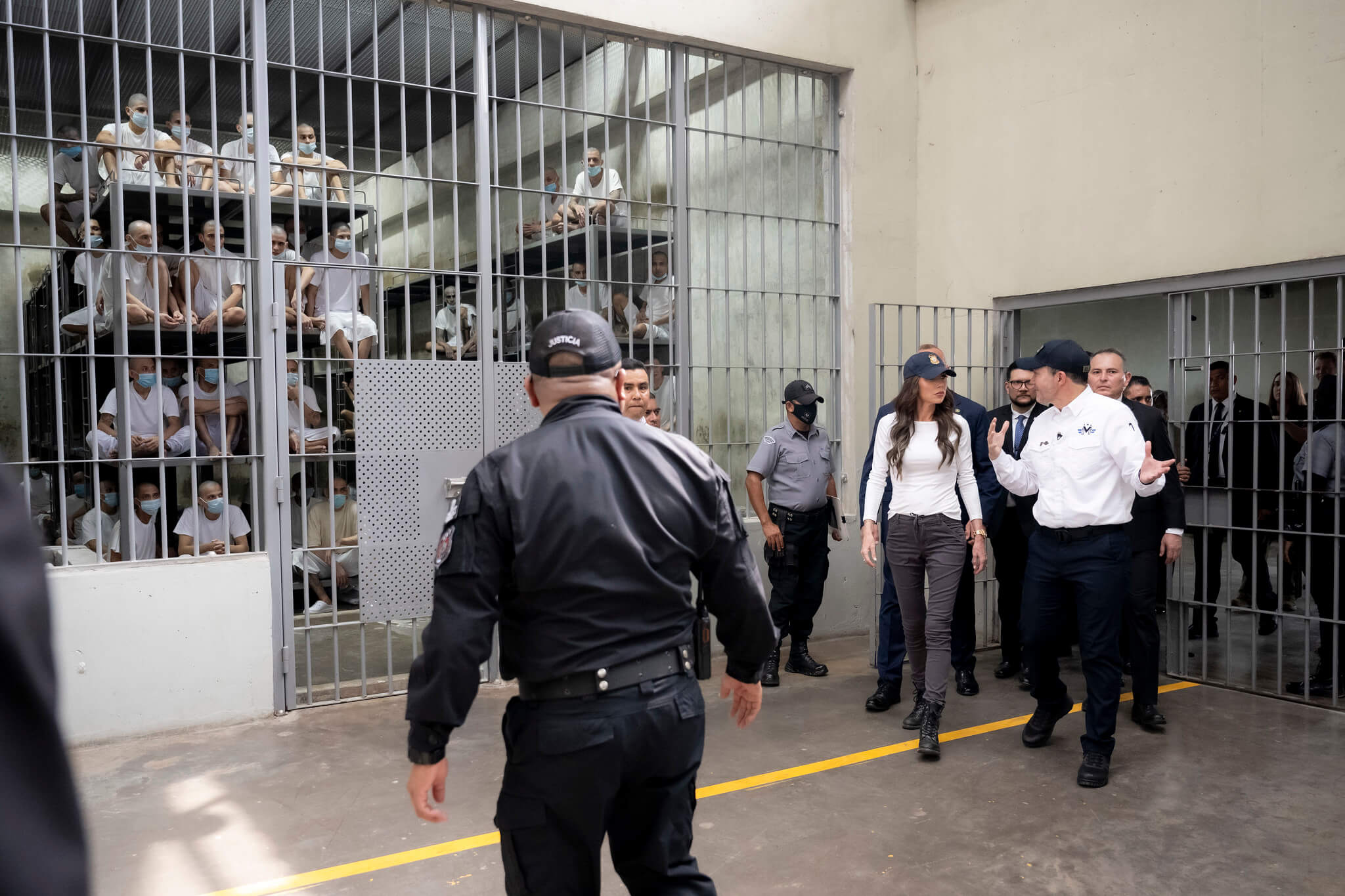Middle East Ticker: A New Syrian Ceasefire and a Saudi-Iran Oil Spat
What to expect from the new ceasefire in Syria.
Published by The Lawfare Institute
in Cooperation With

What to expect from the new ceasefire in Syria.
After a particularly bloody weekend, a new ceasefire agreement entered effect in Syria at 7 PM local time on Monday, and after some initial violations now appears to be taking hold. The arrangement, announced by the United States and Russia on Saturday morning, creates a phased process for U.S. cooperation on counterterrorism strikes in exchange for the Assad regime providing humanitarian access to besieged areas and halting violence against moderate groups. U.N. officials said today that they are waiting to verify a reduction in violence before sending aid convoys in from Turkey. Several rebel groups expressed concern about the plan, particularly the lack of an enforcement mechanism, but indicated they would abide by the deal until it is violated. If the agreement holds for a week, the United States is supposed to begin joint strikes with Russia against the Islamic State and Jabhat Fatah al-Sham (formerly Jabhat al-Nusra), which are not party to the ceasefire.
A previous ceasefire reduced the level of violence in Syria for several weeks earlier this year, in February and March, before slowly collapsing. Most analysts do not expect the new truce to be successful over the long term, and predict that, like the previous arrangement, it will totter along briefly before falling apart. But the particularly deadly weekend following the announcement, during which at least 90 people were killed in Idlib and Aleppo, is not the worst indicator for the truce’s success or failure—an initial spike in violence is not uncommon as parties jockey for position ahead of a ceasefire. Likewise, early reports of violations were expected and the conflict may yet settle into a temporary stasis, at least in areas where the Islamic State and Jabhat Fatah al-Sham have a limited presence. Instead, what is more likely to undo the ceasefire is conflict between the United States and Russia over which rebels can be targeted in proximity to terrorist groups and between Russia and the Assad regime over maintaining the agreement. Assad reiterated his intention to purge the entire country of rebels on Monday, speaking from Darayya, a suburb of Damascus with particular significance to the Syrian opposition. As his forces, and the Russians working with U.S. military planners, start testing the limits of what they can get away with under the agreement, the deal will likely start to fray and—in the absence of credible enforcement—possibly collapse. When that happened in April, the White House spent weeks trying to revive the ceasefire even as Russian airstrikes escalated in Aleppo.
Several experts have published more detailed assessments of the ceasefire. Bassam Barabandi, Hassan Hassan, and Faysal Itani, writing for The National, have a good summary of the arrangement and are cautiously optimistic about its implementation. Aaron David Miller, in WSJ’s Think Tank section, offers a realist’s argument for why it might work, at least temporarily. Randa Slim, writing for Foreign Policy, is similarly skeptical, noting the essential differences that will likely prevent U.S.-Russian cooperation.
Saudi-Iranian bickering overshadows Saudi-Iranian oil production dispute.
The Saudi and Iranian governments had another of their episodic sectarian public spats last week, this time in advance of the hajj, the annual pilgrimage to Mecca, which began last Friday. The Iranian government banned their citizens from participating this year after a stampede last year killed an estimated 2,426 people, 464 of whom were Iranian pilgrims. The latest feud began when Iranian Supreme Leader Ayatollah Ali Khamenei suggested Saudis killed Iranians wounded in the disaster, and things quickly devolved to mutual accusations. The comments generated protests against the Saudi government in Tehran. The last flare-up in public tensions like this was in January after Saudi Arabia executed Shia cleric Nimr al-Nimr.
It’s difficult to assess the significance of these periodic bouts of political bickering, which, as Brookings’ Emma Borden notes, extend back decades. They certainly exacerbate sectarian tensions in unproductive ways, but they also distract from more substantive political disputes. Lost amid the headlines last week was a genuine point of geopolitical tension developing between the two rivals. On September 5, Saudi and Russian officials reached an agreement on the sidelines of the G20 summit to cooperate on oil production, potentially capping output in order to bring prices back up. Saudi Arabia and Russia, the two largest producers in the world, have been discussing such an arrangement for months and both have been severely hurt by the collapse of oil prices—Saudi Arabia is behind on paying contractors and is considering $20 billion in cuts to long-term projects. But when asked about Iran’s growing oil output two days later, Seyed Mohsen Ghamsari, the director of international affairs for the National Iranian Oil Company, said his country is continuing to ramp up production in an attempt to recover from international sanctions that were lifted in January and will reach its pre-sanctions level of production in the 2-3 months. That makes an oil freeze considerably less likely. Russia has tried to resolve the issue by proposing that Iran be exempted from the production freeze, but Saudi leaders have balked at the idea. At this point, it seems that Riyadh would still rather hem in its own economy with low oil prices than allow Tehran to benefit from reduced Saudi output.
Bahraini activist faces (more) charges after NYT editorial.
Nabeel Rajab, a Bahraini human rights activist who has been in and out of prison since 2012, was brought up on new charges last week after publishing a pointed editorial in the New York Times. In the editorial, “Letter from a Bahraini Jail,” Rajab recounts the crimes that landed him in prison, including his activism regarding the Bahraini penal system and tweets he posted criticizing the Saudi intervention in Yemen. He notes a meeting he had with U.S. Secretary of State John Kerry and writes, “I would like to ask Mr. Kerry now: Is this the kind of ally America wants? The kind that punishes its people for thinking, that prevents its citizens from exercising their basic rights?” The new charges, which include publishing “false news and statements and malicious rumors that undermine the prestige of the kingdom,” were announced the day after the editorial’s publication.
Rajab was already in jail—he was arrested in June and was due to be sentenced in October. Before his most recent arrest for tweets sent in 2015, he was subject to a travel ban, as are many other activists and journalists in Bahrain. Despite having a generally low tolerance for dissent, especially since widespread protests by the country’s majority Shia population in 2011, the Bahraini government cracked down especially hard this year. The country now has the largest prison population per capita in the Middle East and more than 4,000 political prisoners. While travel bans and trials picking off activists like Rajab one-by-one have been building slowly, the government went as far as definitively dissolving al-Wefaq, the largest Shia opposition party, in July. (Khalifa Ali Alfadhel, a professor at the University of Bahrain, recently gave some counterintuitive spin to the government’s decision, claiming that banning the party was in fact the “first executive step towards the establishment of a democratic society in Bahrain.”) The U.S. State Department said last week that it is concerned about “the state of human rights in general in Bahrain” and called for Rajab’s immediate release.
The story you’re not paying attention to but probably should: Egypt’s economic shakeup.
The Egyptian government is desperately trying to shore up its economy, and has spent recent weeks trying to solicit $6 billion in international contributions to qualify for a $12-billion loan from the International Monetary Fund. In its latest move to increase government revenue, the Egyptian parliament voted recently to implement a 13-percent value-added tax, and if the plan proceeds, the tax will increase to 14 percent next year. Officials said measures would be taken to alleviate the harshest ramifications of the tax for the poor, but Luiz Sanchez, writing for Mada Masr, notes that many of the effects, such as increased transportation costs, are difficult for governments to manage. President Abdel Fatteh el-Sisi previously pushed through subsidy reforms in 2014 during the honeymoon period after his election, but the government still provides significant cost reductions that could be affected by the government’s failure to make a planned purchase of wheat from the international market.
Egypt has a history of using foreign patronage to muddle through economic crises rather than enact significant reforms that could spur political backlash, and the years since the 2011 uprising have been no exception. But it’s a truth universally acknowledged that revolutions are powerfully destructive economic forces—Trotsky called it “the overhead expenses of historic progress”—and postponing reforms yet again is no longer an option. Currency inflation is starting to have cultural effects as men have to wait longer to marry so they can afford traditional gifts of gold jewelry, if they can afford to marry at all, the Wall Street Journal reported last week. “Egypt is nearing a breaking point,” writes Karen Young of the Arab Gulf States Institute in Washington, who suggests Cairo’s reliance on Gulf aid may be a “miscalculation.” The necessity of reform doesn’t prevent political consequences, though. Bread riots have been fairly common over the years, and some analysts pointed to the rising cost of staple goods in 2010 as a contributing factor to the uprising in January 2011. Pressing ahead with difficult reforms is an economic necessity. What is less clear is whether Sisi can maintain support through the process, and to what lengths he will be willing to go to stifle political dissent to ensure the reforms succeed.





